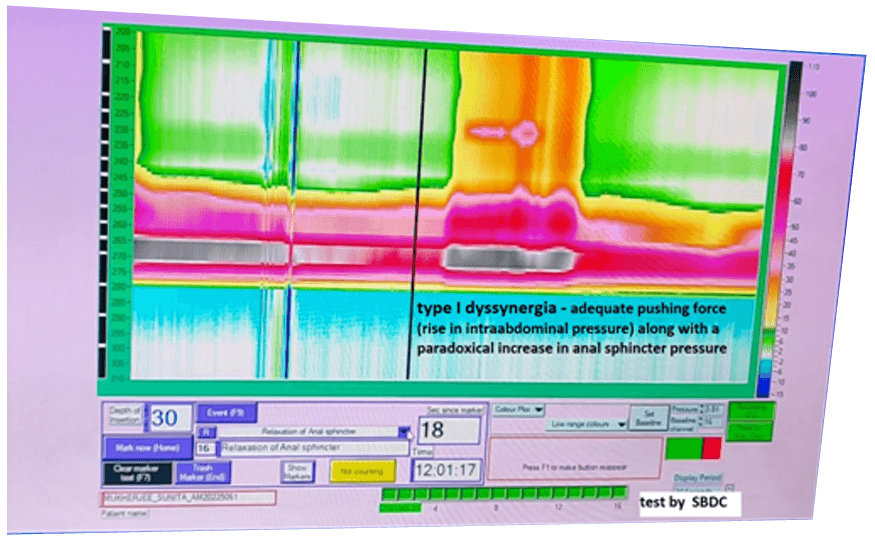GI Motility (High-resolution manometry)
High-resolution manometry (HRM) is a gastrointestinal motility diagnostic system that measures intraluminal pressure activity in the gastrointestinal tract using a series of closely spaced pressure sensors.
Esophageal manometry takes about 30 to 45 minutes. The technician will verify that you have not eaten anything within 6 to 8 hours of the study. One nostril is anesthetized with a numbing lubricant. A thin flexible plastic tube is passed through the anesthetized nostril, down the back of the throat, through esophagus into stomach as you swallow. With the tube inside the esophagus, you will lie down on your back. After a short rest to allow the pressures to equilibrate, the test will begin. The pressures generated by the esophageal muscle will be measured when the muscle is at rest and during swallows. During the test, the technician usually asks the patient to swallow on command with some liquid (called a wet swallow). Multiple swallows are tested to allow measurement of the lower esophageal sphincter (the barrier to reflux), the esophagus (the swallowing tube), and the upper esophageal sphincter (in the throat). Pressure recordings are made throughout the study. Then you will sit up and repeat the same swallow sequence depending on the protocol. Once the test finished, the tube is withdrawn.
Patients can usually resume regular activity, eating, and medicines immediately after the test.

Anorectal manometry is a test that measures how well the rectum and anal sphincters work together to eliminate stool. The anal sphincter has an internal and external sphincter, or valve, which helps to control continence (passing) of stool.
When would anorectal manometry be needed?
The anorectal manometry test is commonly given to people who have:
- - Difficult passing stool or obstructed defecation.
- - History of manual evacuation
- - Fecal incontinence (can’t control bowels and this results in a leakage of feces).
- - Chronic Constipation
- - Hirschsprung’s disease in children (disease that can cause a blockage in the large intestine).

Dyssynergic defecation: (in our patient)
The anorectal manometry test is commonly given to people who have:
- - Difficult passing stool or obstructed defecation.
- - History of manual evacuation
- - Fecal incontinence (can’t control bowels and this results in a leakage of feces).
- - Chronic Constipation
- - Hirschsprung’s disease in children (disease that can cause a blockage in the large intestine).

